In-Depth Review of Galaxy S21 Ultra Camera Specs
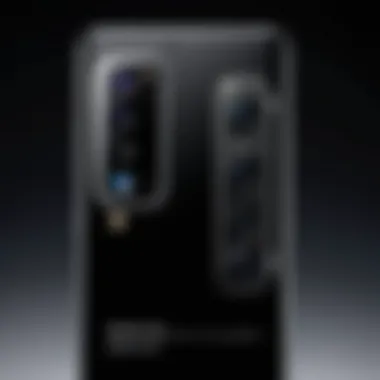
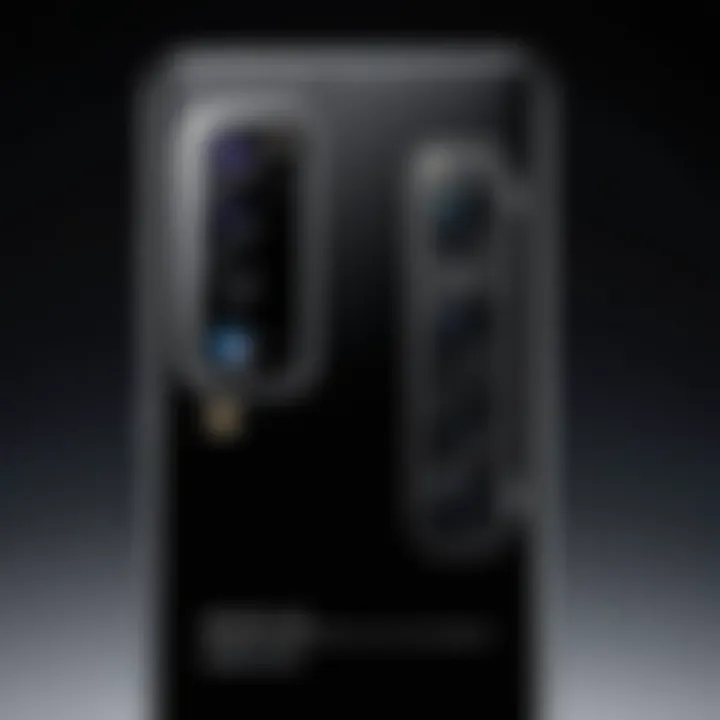
Intro
The Samsung Galaxy S21 Ultra has made quite a splash in the smartphone market, especially regarding its camera capabilities. As an enthusiast or a gadget aficionado, the camera's specifications can often make or break the decision to invest in a new device. The S21 Ultra brings forth a wealth of features, allowing for photography and videography that rival, and sometimes surpass, traditional cameras. Let’s dive into what sets this phone apart in terms of camera technology.
Overview of the Technology
The Galaxy S21 Ultra packs a punch with its impressive camera setup. At the heart of its photography prowess are the key specifications that provide insights into its performance:
- Main Camera: The S21 Ultra boasts a remarkable 108-megapixel (MP) primary sensor that captures stunning detail even in low-light conditions.
- Telephoto Lenses: It includes not one but two telephoto lenses, offering optical zoom capabilities of 3x and 10x respectively, allowing users to get close to the action without sacrificing image clarity.
- Ultra-wide Lens: A 12MP ultra-wide camera enables capturing expansive landscapes or large group shots, making it versatile for various shooting scenarios.
- Video Capabilities: The device supports up to 8K video recording at 24 frames per second, a feature that puts cinematic quality in the palm of your hand.
Key specifications
- Main Camera: 108 MP
- Ultra-wide Camera: 12 MP
- Telephoto Cameras: 10 MP (3x zoom) and 10 MP (10x zoom)
- Video Recording: 8K at 24 fps, 4K at 60 fps
Unique selling points
One aspect that truly distinguishes the S21 Ultra is its advanced software capabilities.
- Space Zoom: More than just a marketing term, Space Zoom utilizes both optical and digital zoom to capture images from a distance, effectively combining both lenses’ power and allowing for a zoom of up to 100x.
- Director’s View: This feature lets users preview multiple lenses simultaneously, providing flexibility to capture various angles in a single take.
- AI Enhancements: Samsung's AI technology improves image quality by optimizing settings based on the scene, making photography accessible for users at any skill level.
Here's a noteworthy observation:
"The combination of hardware and software allows for intuitive interaction. The Galaxy S21 Ultra is designed not just for professionals but for anyone who enjoys photo and video captures on-the-go."
Design and Build Quality
The aesthetics and ergonomics of the camera setup also play a significant role in user experience.
Material used
Samsung has truly gone above and beyond with material choices here. The rear is crafted from Gorilla Glass Victus which is known for its durability and resistance to scratches. The camera module maintains a sleek design while being elegantly integrated into the phone body. This careful attention to detail imparts a sense of luxury and robustness.
Ergonomics and usability
When holding the S21 Ultra, the comfortable grip is evident. It's designed to fit snugly in your hand, providing easy access to camera controls. The arrangement of the lenses is intuitive, and the buttons are well-placed for quick adjustments. Whether you're capturing a spontaneous moment or setting up for a detailed shot, usability is at the forefront of its design.
With the blend of advanced camera technology, thoughtful design, and user-friendly features, the Galaxy S21 Ultra deserves a closer inspection, especially for those whose passion thrives in creativity.
Overview of the Galaxy S21 Ultra
The Samsung Galaxy S21 Ultra stands as a noteworthy giant in the crowded smartphone market, especially when it comes to its camera system. This flagship device, unveiled in early 2021, reshapes the expectations for smartphone photography, melding advanced technology with user-centric design.
Significance of the Overview
Understanding the overview of the Galaxy S21 Ultra helps convey not just the specs, but also the philosophy behind Samsung's approach to mobile photography. The device features a sophisticated camera setup that's pivotal for tech-savvy individuals, gadget lovers, and early adopters. With most people tethered to their devices for capturing life’s fleeting moments, knowing what the S21 Ultra can do is essential for anyone thinking of upgrading.
Moreover, this device pushes the envelope with a versatile camera system, offering features that can satisfy both amateur photographers and professionals alike. You don’t just get a standard camera; rather, you access a powerful system that boasts multiple lenses, each engineered to tackle different imaging needs. This is likely to be a prime consideration for those who value capturing stunning images with a smartphone.
Elements to Consider
Technically speaking, the Galaxy S21 Ultra houses a 108-megapixel main camera, a massive leap from its predecessors. This clearly isn’t your everyday smartphone. The processing capabilities also matter; the advanced image processing algorithms work tirelessly to produce clear, refined images even in challenging conditions.
In the realm of low light performance, the S21 Ultra really shines. Its ability to process images effectively in dim settings is a game-changer for night photography, where many devices often struggle.
Additionally, it has unique features that aren't just gimmicks but practical for everyday use. The Space Zoom capability, for example, allows users to zoom in on subjects without losing sharpness, a feature that's increasingly relevant as social media demands high-quality content.
Key Points
To capture the essence of this device, certain elements deserve emphasis:
- Main Camera Specifications: Highlighting the pixel count, lens aperture, and sensor type gives a solid base for understanding its photography capabilities.
- Versatility Across Different Lenses: Delving into the telephoto and ultra-wide capabilities enriches the conversation around user experience.
- Purpose and Usability: Focusing on how these features translate into real-world applications offers clear value for users.
In summary, the Galaxy S21 Ultra is not just another smartphone; it’s a thoughtful assemblage of technology that appeals to a discerning audience. By understanding its specifications, benefits, and practical applications, readers can appreciate its role in the tech landscape—a role that stretches far beyond capturing photos or videos.
Key Camera Specifications
Understanding the key camera specifications of the Galaxy S21 Ultra is essential for anyone keen on leveraging its photographic capabilities. These specifications shape how users engage with the camera and what kind of results they can expect. When diving into these features, it is not just about numbers but about how they affect the photography experience and outcome. From pixel resolution to lens constructions, each component is crafted to meet the high demands of photography enthusiasts and professional users alike.
Main Camera Lens Capabilities
Pixel Count and Resolution
The pixel count and resolution of the S21 Ultra’s main camera is remarkable, boasting a whopping 108 megapixels. This high resolution allows photographers to capture astonishingly detailed images. In practical terms, the ability to crop an image without losing quality is a game-changer. If you’re someone who enjoys fine art photography or looking to make prints, the high pixel resolution ensures you have the flexibility you need. One noteworthy aspect of this setup is the adaptive pixel technology that combines multiple pixels for better low-light performance, making it an attractive feature for night-time photography.
However, high pixel counts can sometimes lead to larger file sizes, which might not appeal to those who prioritize storage efficiency. Thus, weighing the benefits against potential downsides is important.
Lens Aperture and Focal Length
The lens aperture on the Galaxy S21 Ultra stands at f/1.8, facilitating greater light intake, which is particularly advantageous in dim lighting. The absence of a high f-stop means photos can come alive with vibrancy rather than be muddled by shadows. Coupled with a focal length of 26mm, it provides a versatile angle for most photography scenarios, from portraits to landscapes.
This broad aperture is a significant attraction for those who appreciate creating a soft background blur, known as bokeh, particularly in portrait photography. However, while this can elevate the aesthetic quality of portraits, it might require some practice to master properly.
Image Sensor Type
When discussing image sensor types, Samsung employed an advanced 1/1.33-inch sensor, which isn’t just about size; it also plays a vital role in capturing light more effectively than smaller sensors. This larger sensor is instrumental in improving the overall image quality, especially under challenging conditions.
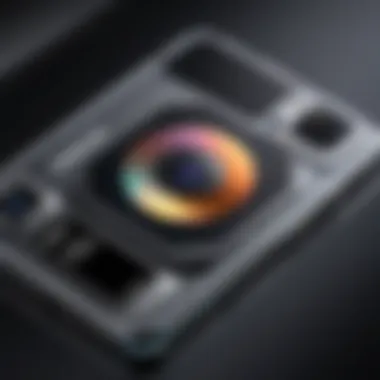
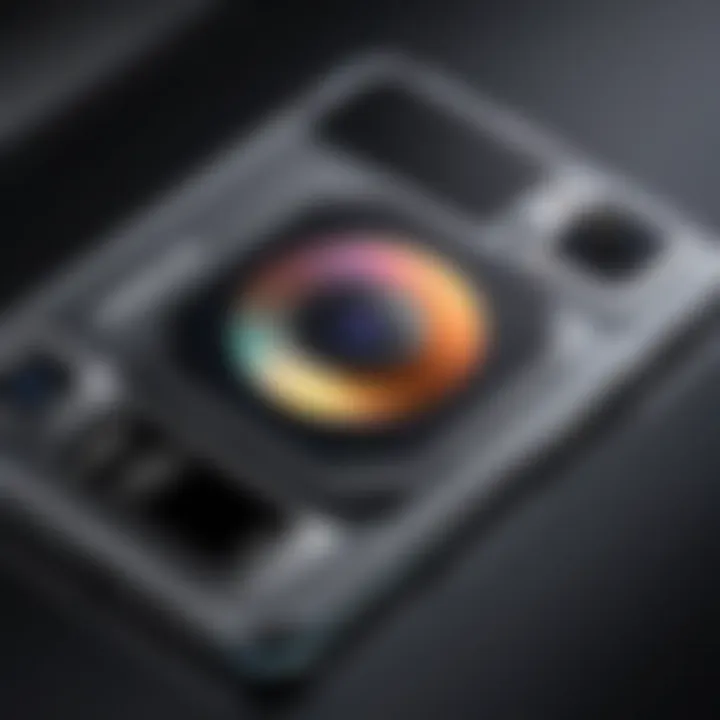
It also features Dual Pixel technology, which enhances autofocus speed and accuracy, giving users confidence when shooting fast-moving subjects like pets or children. One downside might be that the increased sensor size can affect the phone’s design and weight, but the enhancement in photo quality could outweigh those concerns for many users.
Telephoto Lens Features
Optical Zoom Range
The optical zoom feature of the telephoto lens is another delight, offering 10x optical zoom. This capability allows users to zoom in on distant subjects without losing that pristine image clarity. This is particularly useful for wildlife photographers or those wanting to capture candid shots during events or sports.
One unique aspect is how this telephoto lens performs dynamically in varying light conditions. It makes it easier for photographers to seize the moment, be it at dusk or in direct sunlight. However, zooming at the higher end might still require a steady hand—like balancing a tightrope.
Digital Zoom Capabilities
In addition to optical zoom, the S21 Ultra boasts digital zoom capabilities, with a maximum up to 100x. It’s a feature that dazzles on paper but can sometimes lead to significant quality loss, especially if the ambient light is not conducive. Users often find that while the functionality is appealing, the results may not meet the experience of traditional photography.
Users often jest that it’s more for show than practicality, but it can certainly come in handy for those spontaneous shots when you don’t want to close the gap physically.
Low-Light Performance
Low-light performance is crucial for many photographers and the Galaxy S21 Ultra shines here. Thanks to its impressive sensor capabilities and software advancements, users can capture stunning images even after the sun has gone down. Features like Night Mode enhance this experience by pulling in as much light as possible, ensuring night shots come out crisp.
However, users may find the images can sometimes appear too processed, which might not appeal to those who prefer a more natural look. It’s all about preference and the art of photography.
Ultra-Wide Lens Details
Field of View
The ultra-wide lens offers a generous 120-degree field of view, making it an indispensable tool for landscape photographers and group shots. This field captures a broader perspective, encompassing vast scenes or large gatherings without needing to step back significantly.
Its generous field adds an element of depth to photographs. However, some users might find it tricky to compose shots, often resulting in unintended distortions if not carefully framed.
Distortion Levels
Every ultra-wide lens has its quirks when it comes to distortion levels. The Galaxy S21 Ultra has mitigated this effect somewhat, but using it requires an understanding of perspective control. Distortion can result in fun and inventive compositions, but it sometimes betrays a true representation of space.
Engaging with this characteristic can lead to creative adaptations, turning a seemingly flawed aspect into a unique style.
Macro Photography Feasibility
While primarily known for its wide and telephoto capabilities, the S21 Ultra also allows for macro photography. Users can get up close and personal with subjects, capturing intricate details often overlooked in broader shots. This feature can enhance the storytelling aspect of photography.
However, this close focus demands stability and light adaptability, as being too close to the subject might cause unexpected blurriness in the image capture.
Front Camera Specifications
Selfie Quality Metrics
The front camera of the S21 Ultra is equipped with a 40-megapixel sensor, ensuring that selfies are sharp and detailed. This high resolution means that even when you crop the image for social media, quality isn’t compromised. It’s tailored for the selfie aficionados who document their experiences.
But with high quality comes the challenge of ensuring proper lighting; selfies in poor conditions can sometimes fall flat. Thus, being mindful of your surroundings can greatly influence the final result.
Video Recording Features
The video recording features on the front camera are equally impressive, capable of recording in 4K. This means users can capture smooth, vibrant video content, perfect for vlogs or sharing experiences on social media platforms.
Nevertheless, while 4K is fantastic, it does demand storage space. This aspect might force users to carefully consider what they choose to record, prioritizing moments that matter.
Portrait Mode Capabilities
The portrait mode on the front-facing camera is designed to enhance selfies with the classic blurred background effect, known as bokeh. This method provides a pleasing aesthetic to personal photos, making them feel more professional.
However, achieving the right balance can require some fiddling; sometimes, the edge detection isn’t perfect, which might lead to odd outlines around subjects. Mastering the use of portrait mode can dramatically enhance your photography repertoire.
Unique Camera Features
When discussing the camera specifications of the Galaxy S21 Ultra, it is essential to consider its unique camera features. These elements not only set the device apart from its predecessors but also shape the smartphone photography landscape. With technology advancing faster than a dog on a leash, having standout characteristics is crucial for capturing impressive images and videos.
The unique camera features of the Galaxy S21 Ultra amplify its appeal for both amateur and seasoned photographers. These functionalities enhance not merely the quality but also the versatility of the device, allowing it to adapt to a myriad of shooting conditions.
Space Zoom Explained
Understanding the Technology
The Space Zoom technology takes full advantage of the Galaxy S21 Ultra's telephoto lens capabilities, enabling users to digitally zoom up to 100x. This feature combines optical zoom and advanced cropping methods to deliver impressive results, even from a distance. It uses a mix of algorithms that calibrate images effectively, ensuring that while you might feel as if you’re miles away, your photos still retain clarity. The key characteristic here is the seamless blending of hardware and software technologies, making this zoom enhancement a strong selling point.
However, this zoom feature does come with disadvantages; the more you zoom, the more the image quality can suffer. Users often report noise and blur, especially in low-light conditions, which can dampen the overall effect.
Comparison with Competitors
When compared to similar offerings from brands like Apple and Google, Space Zoom provides the S21 Ultra with an edge in terms of sheer magnification. Competitors may offer robust camera systems, but their zoom capabilities generally cap at lower magnification levels. The unique feature of Samsung's zoom technology lies in its hybrid approach, which justifies its promotional hype. That being said, while it dazzles with high zoom numbers, it's vital to remember that actual performance may vary across different scenarios, leading to some frustration for users hoping for crystal-clear results.
Real-World Use Cases
In practical applications, Space Zoom shines during wildlife photography or capturing subjects at a distance, like the vibrant city skyline. Users can showcase beauty without needing to physically relocate, providing a moment's convenience. The characteristic breadth of the zoom functionality aids in expanding the creative possibilities. Nevertheless, in situations requiring stable imagery, like a moving target, one might struggle to maintain focus when pushing the limits of zoom.
Director's View Functionality
Multifunctional Use
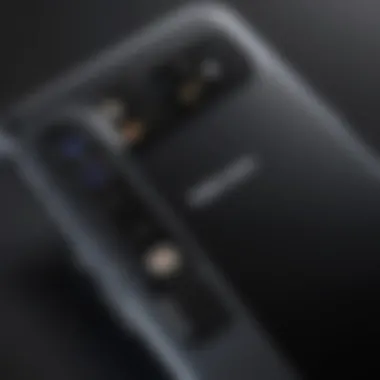
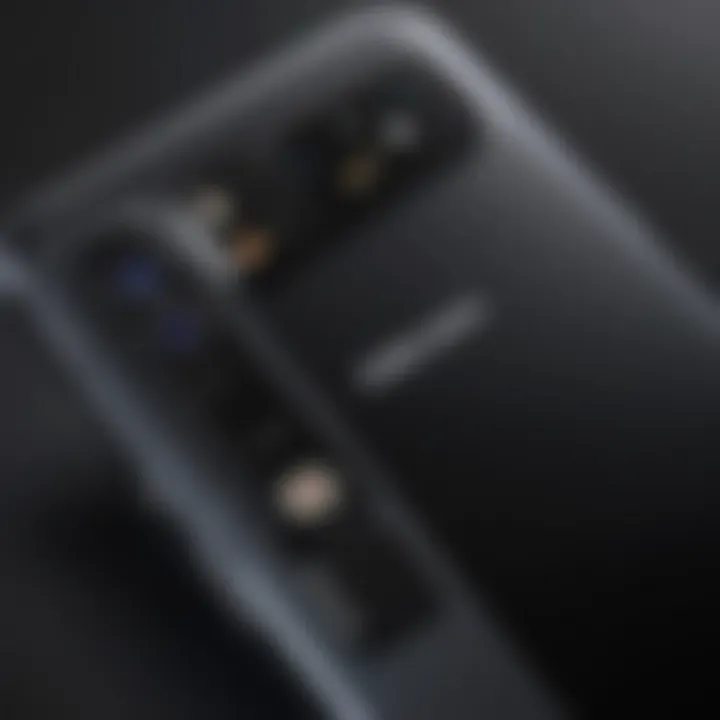
The Director's View captures multiple perspectives with its support for simultaneous recordings from various lenses. This means filmmakers can switch between ultra-wide, wide, and telephoto angles on the fly. Such multifaceted usage enriches the storytelling potential of video content, allowing filmmakers truly to express their vision unencumbered. Users appreciate this feature as it embraces versatility and creativity, allowing dynamic storytelling without needing additional equipment.
On the downside, juggling these multiple views can be overwhelming for novice users, sometimes necessitating a learning curve.
Impact on Storytelling
Director’s View turns mobile videography into a more immersive experience. By allowing creators to shift between different frames, the impact on storytelling is pronounced. Visual transitions can be smoother, capturing viewers with varied perspectives and keeping their attention. This interactivity ennobles mobile filmmaking, pushing the creative boundaries. However, while the potential is vast, the demand for skill in editing and juxtaposition becomes evident, as choices can lead to cluttered narratives if not handled diligently.
User Feedback and Adoption
User reviews highlight the ease of use associated with the Director's View functionality, allowing filmmakers new and seasoned to adapt quickly. Many praise its range and accessibility, although there are some grumbles about bugs during usage that often crop up. The feature's adoption has shown promise, especially among content creators on platforms like YouTube, where audience engagement hinges on compelling visuals.
Single Take Mode Insights
Features and Limitations
Single Take Mode allows users to capture multiple photos and videos with one simple tap, creating a variety of media to choose from without fussing over settings. This is particularly valuable in fast-paced situations, providing a safety net for users worried about missing key moments. Its standout characteristic is that it combines various styles—like wide-angle shots and videos—into a collective analysis, offering a smorgasbord of options. However, this abundance can lead to a surfeit of images, making it harder to sift through and find the gems.
Suitable Use Cases
This mode suits events like family gatherings or spontaneous outings. When life gets too quick, having a tool that handles a multitude of shots can be invaluable. The main benefit here is convenience, permitting users to focus on the moment instead of fiddling with camera choices. Still, it’s not particularly useful for those who desire more control over individual shot settings, potentially leading to disappointment if high customization is sought.
Video Output Quality
When it comes to video, the Single Take Mode’s robust processing offers decent quality, though it may falter in underwhelming environments. The key feature here is its ability to generate varying formats from a single clip, enabling quick edits to fit social media. Its downside, however, resides in the potential loss of resolution when utilizing features simultaneously, presenting a challenge for those seeking pristine video quality.
Software Enhancements
The software enhancements in the Galaxy S21 Ultra play a pivotal role in defining the user experience and optimizing camera performance. In an age where smartphone cameras are often judged not just by hardware but by how well built-in software can enhance photos and videos, these features stand out. Software can significantly affect factors such as noise reduction, image stabilization, and overall processing speed, ensuring that the camera can perform well in various conditions.
Video Recording Options
Resolution Options
When you talk about resolution, many instantly think of clarity and detail. The Galaxy S21 Ultra gives users the option to record videos in resolutions up to 8K. This high resolution makes a big difference, especially for those who value crisp and sharp videography. One standout aspect of 8K is its incredible detail retrieval.
This feature is great for those wanting to capture scenic landscapes or intricate details during events. However, one must note that recording in 8K can be storage-intensive. This can deter a few users who may not have adequate storage spaces.
Frame Rate Capabilities
Frame rate capability is another crucial element for video recording. The Galaxy S21 Ultra supports various frame rates, including 24, 30, and a more fluid 60 frames per second. This diversity allows creators more flexibility based on their intended style. 60 fps provides smoother motion, especially in fast-paced scenes like sports or dance performances.
But it can be heavy on data, meaning you need serious storage. For casual users, sticking to 30 fps might be a better option.
Stabilization Features
Stability in videos is an absolute must, especially when shooting handheld. Samsung employs enhanced stabilization technology in the S21 Ultra, making it an appealing choice for content creators. This feature helps in minimizing shakes and jitters in recorded footage, giving a professional touch to personal videos. Users will find that even while walking or moving around, the result remains smooth and watchable.
However, some users have found that in extremely active situations, like fast running, the stabilization may not be as effective. Still, for most circumstances, it holds up well.
Image Processing Algorithms
AI Enhancements
Artificial Intelligence has emerged as a game-changer in smartphone photography. In the Galaxy S21 Ultra, AI algorithms fine-tune images before they even reach the camera roll. This means better enhancements in portraits, landscapes, and night shots, providing a richer tonal balance and correcting color shifts.
For tech enthusiasts, this can deepen their appreciation for the subtle nuances in shots. However, sometimes the AI processing can lead to overly smoothed images, which might lose some natural textures.
Low Light Optimization
Low light optimization is another standout feature, allowing photos to capture clarity even under dim conditions. The Galaxy S21 Ultra utilizes advanced algorithms to boost brightness while preserving details and maintaining a natural look. This is particularly useful for night photography, candle-lit dinners, or indoor setups.
Many users laud this ability, yet using it indiscriminately may raise issues with graininess, depending on the light conditions.
Post-Processing Capabilities
The post-processing capabilities of the Galaxy S21 Ultra extend the camera's usefulness far beyond mere captures. With its built-in editing tools that offer everything from basic adjustments to more elaborate filters, users can refine their photographs easily. This feature has become increasingly essential for those who want to publish polished images without needing third-party apps.
However, if not careful, one might get lost in editing and may risk losing the original essence of their images.
"Samsung's software enhancements indeed push the boundaries of what one can achieve with mobile photography, showcasing a balance between creativity and technological finesse."
Comparative Analysis with Preceding Models
When it comes to evaluating the Galaxy S21 Ultra, a comparative analysis with its preceding models is crucial. This section sheds light on how the camera specifications and user experiences have evolved, revealing the strides made in mobile photography and videography. Grasping these differences paints a clearer picture of the S21 Ultra's capabilities and its standing in the crowded smartphone market.
S20 Ultra vs. S21 Ultra
Camera Specifications Comparison
In comparing the camera specifications of the S20 Ultra and the S21 Ultra, there's a noticeable leap, which is noteworthy. The S20 Ultra, while impressive, sported a main sensor with a resolution of 108 megapixels, a jaw-dropping innovation at that time. However, the S21 Ultra maintains this pixel count with enhanced sensor technology, enabling better light sensitivity and overall image clarity.
One key characteristic here is the updated processing chip in the S21 Ultra, which allows for faster image processing and improved low-light performance. This flagpoles the S21 Ultra as a beneficial choice for those who prioritize sharpness and detail in their photography. A unique feature is the enhanced image stabilization for both video and stills, which notably alleviates jitters. While the S20 Ultra was a powerhouse in its own right, the S21 Ultra finshed the race with better fine-tuning in software, making all the difference at the end of the day.
User Experience Enhancements
User experience enhancements feature prominently in the S21 Ultra's design and functionality. For instance, the revamped camera interface is more intuitive, allowing users to navigate through various modes seamlessly. Such improvements translate to a smoother experience, whether you’re snapping a selfie or capturing a landscape.
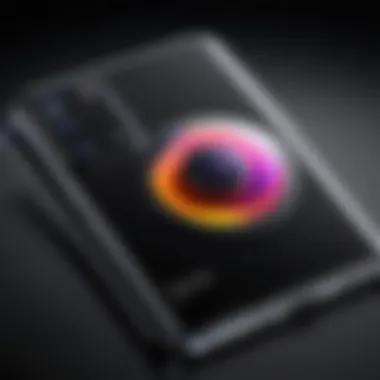
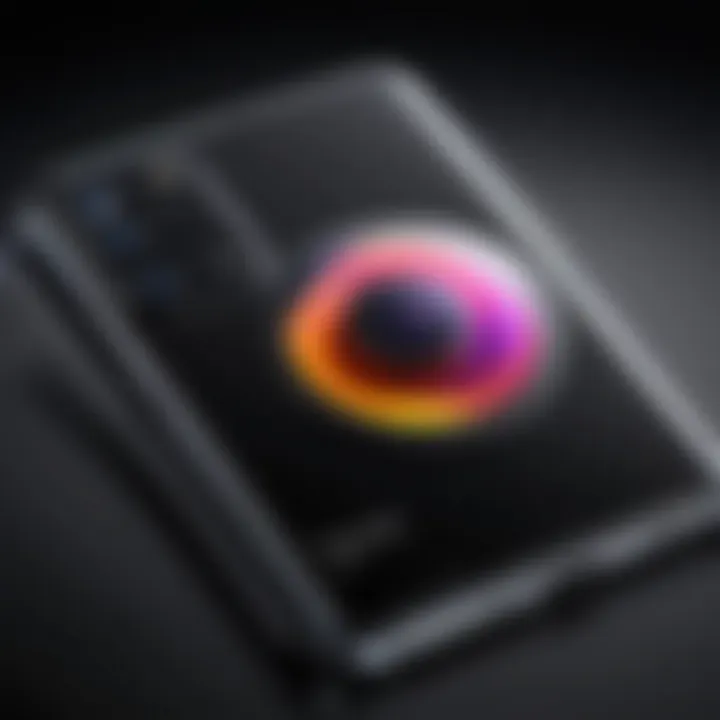
Another important aspect is the faster autofocus system available in the S21 Ultra, which is particularly beneficial for action shots. This snappy autofocus sets it apart from the S20 Ultra, where users sometimes faced delays in focusing, especially in challenging lighting conditions. These enhancements make the S21 Ultra a practical choice for both casual users and serious photography enthusiasts looking for efficiency.
Market Reception
The market reception of the Galaxy S21 Ultra has been overwhelmingly positive, especially when contrasted with its predecessor. Early reviews indicate that users appreciate the consistency in photo quality, which is a step above the S20 Ultra's sometimes erratic performance under certain conditions.
Reception focuses on the versatile camera features like the Director's View and Space Zoom capabilities, which have been lauded for their creativity and potential. A standout feature noticed is the pro mode for video, which elevates the S21 Ultra's appeal for content creators, making professional-looking footage more accessible. While the S20 Ultra had a solid market performance, the enhancements and practical applications touted by the S21 Ultra captivated a broader audience, solidifying its position in a competitive landscape.
Galaxy Note Series Comparison
Professional Use Cases
The Galaxy S21 Ultra shows a marked distinction when placed side-by-side with the Galaxy Note series, especially for professional use cases. The S21 Ultra, with its range of advanced camera features, caters to a niche of professionals who rely on mobile devices for high-quality photography and videography in their work. The advanced video resolution options and pro-level controls allow users to harness the full potential of mobile filmmaking.
Consumer Preferences
Consumer preferences have gradually shifted towards the S21 Ultra due to its all-in-one capability. Users often seek a device that combines powerful performance with convenience. The S21 Ultra’s array of lenses caters to this demand perfectly, whereas the Note series has remained somewhat reliant on the main sensor. This shift curates a more diverse user segmentation, making the S21 Ultra more attractive for photography enthusiasts.
Differential Features
The differential features standout clearly between the S21 Ultra and the Note series. For instance, the S21 Ultra boasts 100x Space Zoom and impressive low-light capabilities, which are not typically emphasized in the Note series. These capabilities not only cater to tech aficionados but also function as a selling point for buyers weighing their purchasing options. The S21 Ultra’s ability to deliver consistently high-quality images across varied situations gives it a competitive advantage, marking a new chapter in smartphone technology.
User Perspectives and Reviews
User perspectives and reviews play a significant role in understanding the true value of any tech gadget, particularly when it comes to smartphones like the Samsung Galaxy S21 Ultra. Gathering insights directly from everyday users provides a clearer picture of how these devices perform in real life, beyond the glossy advertising and technical specifications. This section addresses specific elements, benefits, and considerations related to user experiences which are vital for both technology enthusiasts and potential buyers.
Consumer Experience with Photography
Real-World Photography Examples
When users turn to the Galaxy S21 Ultra for photography, they often recount specific experiences that highlight its camera capabilities. Users commonly share snapshots taken during family gatherings, vacations, or day-to-day moments that emphasize how the S21 Ultra captures vibrant colors and sharp details. A key characteristic of these examples is the camera's ability to adapt well in different lighting conditions, making it a solid choice for spontaneous photography.
One unique feature that stands out is the telephoto lens, which allows for high-quality close-ups even from a distance. Many users appreciate this, especially when attending events where they don't want to crowd the subject. However, in some cases, there are reports of slight digital noise in low-light scenarios, indicating that while the camera is versatile, perfection might not always be attainable.
Feedback on Software Features
User feedback on the software features of the S21 Ultra often focuses on how intuitive and easy to use it is. Many users enjoy the Single Take Mode, which allows capturing multiple photo formats with just one press of the shutter button. This functionality has become a favored aspect, particularly for users who prefer minimal fuss in getting pictures without toggling numerous settings.
The downside noted by some is that the processing time can be a tad slow, especially when capturing high-resolution images. Users expect efficient performance, and hesitation can lead to missed opportunities for great shots. Overall, the strengths of user-friendly features contribute positively to the user experience, making it popular among individuals who value creativity without the need for technical expertise.
Comparative User Experience Ratings
When analyzing comparative user experience ratings, many reviewers rate the Galaxy S21 Ultra highly, often placing it among the top contenders in the smartphone market. The ability of the camera system to manage dynamic range and color accuracy is often highlighted. This makes it a superstar for both professional and amateur photographers looking for quality.
However, areas for improvement typically include battery life during extensive usage. Heavy users engaging in prolonged photography sessions have mentioned feeling constraints. Thus, while the camera capabilities might receive praise, there's a consensus that integration of battery efficiency could elevate the overall photography experience even further.
Videography Feedback
General Impression of Video Quality
In terms of videography, the S21 Ultra has left a substantial impression on users, particularly with its ability to record in 8K resolution. This feature sets it apart from many competitors, giving users an edge when it comes to high-quality video content creation. All these aspects have contributed towards users feeling they are investing in a top-tier videography device.
Despite this, some users have pointed out that the high resolution can come with hefty file sizes, which can be challenging for storage management. But overall, the impressive video quality received considerable praise, catering well to those who want dynamic and visually striking footage.
Usability of Advanced Features
Moreover, users have noted that the usability of advanced features, such as the Super Steady video mode, has transformed their filming experiences. Many have found that it effectively minimizes shaky footage, making it a desirable feature for those who shoot while on the move.
However, a hurdle reported is the slightly steep learning curve for users who want to utilize all features to their full potential. Some users feel that instructions could be clearer, and as a result, they sometimes miss out on leveraging the camera’s maximum capabilities.
Community Reviews and Trends
Community feedback from various platforms such as Reddit and tech forums reveals an ongoing trend of users sharing their experiences. A common thread praises the camera's adaptability—how it shifts perfectly from bright outdoor shots to indoor lighting conditions.
The enthusiastic user community has also encouraged new users to explore aspects of the S21 Ultra that might not be immediately apparent, underscoring the importance of community-driven support.
Overall, the insights from user perspectives enrich this article, offering robustness and layered understanding that technical specifications alone cannot convey.
End and Future Outlook
As we wrap up this exploration of the Galaxy S21 Ultra's camera specifications, it becomes clear just how pivotal the advancements in smartphone photography are. The S21 Ultra is not just a step up; it's a leap into a realm where professional-grade imagery fits snugly into your pocket. The importance of this topic cannot be underestimated, particularly in today’s visually-driven world. We are living in an age where content is predominantly shared through images and videos, making smartphone cameras invaluable tools for communication and expression.
Final Thoughts on the S21 Ultra Camera
The camera system of the Galaxy S21 Ultra has showcased remarkable capabilities that cater to both casual users and enthusiasts. The high pixel count and sophisticated lens arrangements provide versatility that rivals many dedicated cameras. Understanding the nuances between lenses, from the ultra-wide to the telephoto, offers users the ability to frame their shots in creative ways previously unimagined for mobile photography.
Some notable points include:
- High Resolution: Users can snap images with incredible clarity, thanks to the 108-megapixel sensor which is a drastic upgrade from its predecessors.
- Versatile Zoom: The optical zoom capabilities allow for crisp images even from a distance, opening up new horizons for capturing landscapes and portraits alike.
- Software Integration: The seamless blend of powerful hardware and intelligent software algorithms translates to enhanced low-light capabilities and dynamic shooting modes.
In user feedback, many have pointed out that these features simplify the photography process without sacrificing quality, making it easier to capture memorable moments without delving into complex settings.
Impact on Future Smartphone Photography
The innovations found in the Galaxy S21 Ultra may very well dictate the future trends in smartphone photography. As sensors continue to improve, we might witness developments that include further miniaturization of components without compromising the image quality. The key aspects impacting future applications include:
- Enhanced Artificial Intelligence: Future cameras may utilize more advanced AI techniques to adaptively analyze scenes and suggest optimal settings or corrections in real-time.
- Augmented Reality Integration: Expect new features where users can not only capture images but also interact in real-time with their surroundings through augmented reality.
- Improved Connectivity: With the rise of 5G, sharing high-quality images and videos will become instantaneous, fostering a more connected and engaged user base.
As innovations continue to push boundaries, the Galaxy S21 Ultra stands as a benchmark in the ongoing arm race of photography capabilities in smartphones. While it amazes audiences now, it also offers a glimpse at what’s possible in the not-so-distant future. Better features, improved quality, and advanced technology signify a forward-thinking industry. As users adopt these tools, their experiences might redefine our understanding of photography in daily life.
"The more we push the envelope in smartphone technology, the more artistic expression becomes accessible to everyone."
The formidable impact of the S21 Ultra may resonate throughout the industry, encouraging rivals to respond with their innovations. The narrative of smartphone photography is far from finished; in fact, it’s just getting started.







